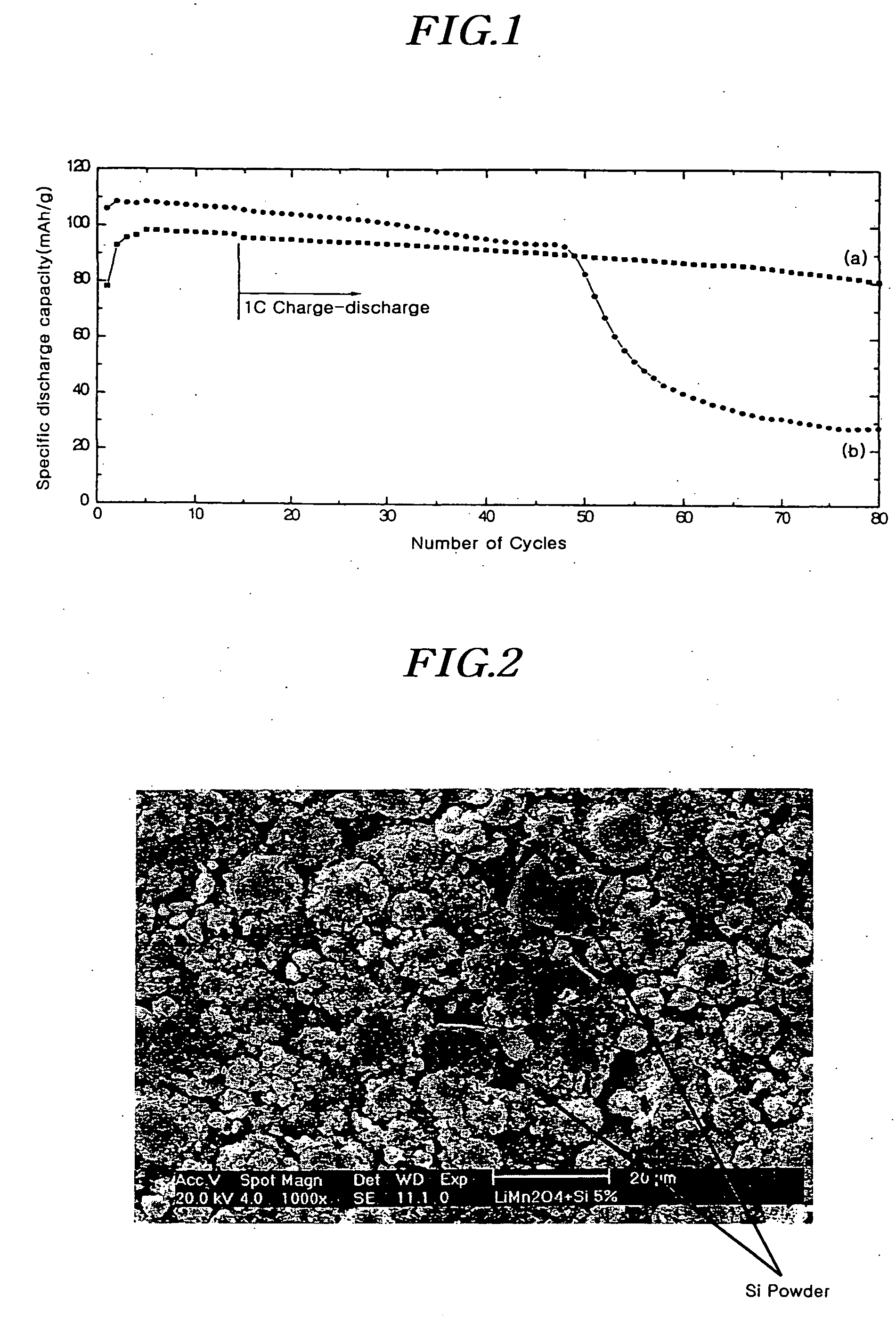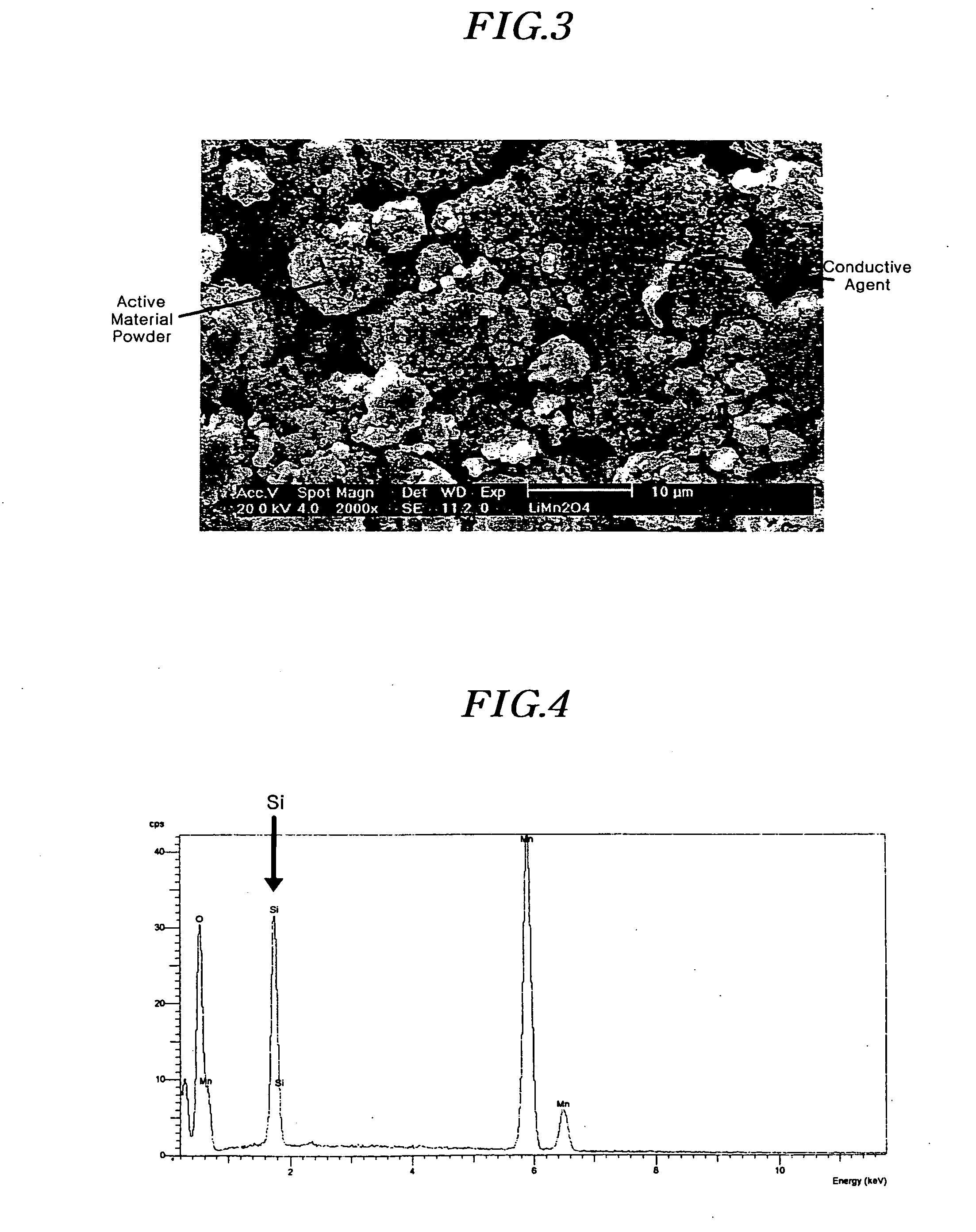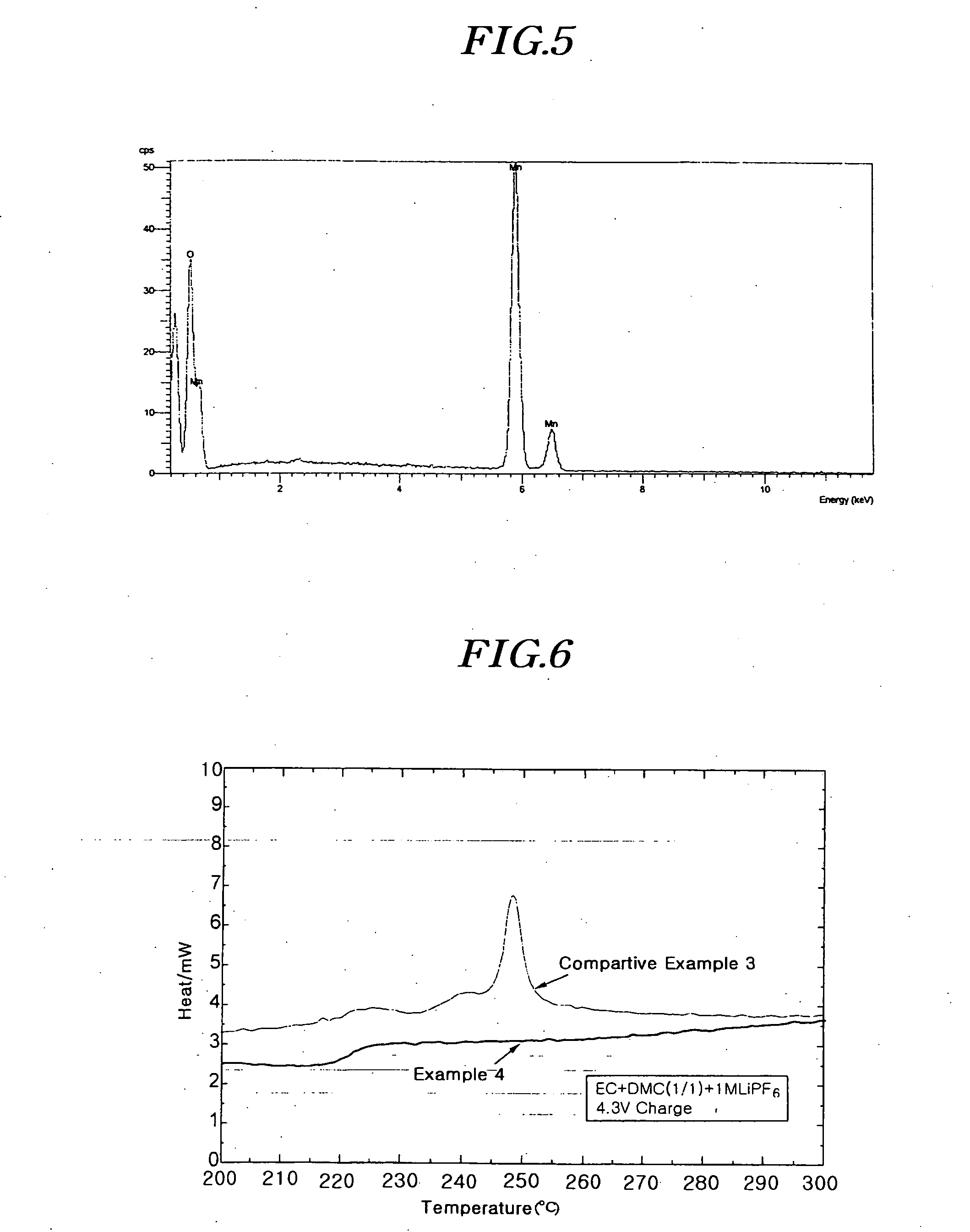Positive active material composition for rechargeable lithium battery and method of preparing positive electrode using same
a rechargeable lithium battery and active material technology, applied in the direction of nickel compounds, manganates/permanentates, cell components, etc., can solve the problems of poor safety characteristics during high-rate charges and discharges, short circuits between positive active materials, difficult production, etc., to prevent the possibility of safety problems present in metallic lithium-based batteries, reasonable shelf life, and high energy density
- Summary
- Abstract
- Description
- Claims
- Application Information
AI Technical Summary
Benefits of technology
Problems solved by technology
Method used
Image
Examples
example 1
[0057] LiOH and MnO2 were weighed in the mole ratio of 1 / 2 of Li / Mn and LiOH and MnO2 were put into a mortar. Ethanol of a sufficient amount to completely react the mixture was added to the mixture and a mortar grinder-mixing step was performed till an ethanol-free condition was obtained.
[0058] The resulting mixture was initially heat-treated at 450□ for 5 hours under a dry air atmosphere to produce a semi-crystalline precursor LiMn2O4 powder. The semi-crystalline powder was re-mixed at room temperature to uniformly distribute lithium salts in the mixture. The re-mixed semi-crystalline was again heat-treated at 750□ for 12 hours under a dry air atmosphere to produce crystalline LiMn2O4 powder. The crystalline LiMn2O4 powder was identified by SEM and analyzed by XRD.
[0059] The crystalline LiMn2O4 was mixed with Si powder (particle diameters of less than 325 nm, Aldrich, Co.). At this time, the amount of Si powder was 5 wt % of LiMn2O4. The mixture was mixed with Super P carbon as a...
example 2
[0064] A rechargeable lithium cell was manufactured by the same procedure as in Example 1 except that 10 wt % of Si powder (particle diameters of less than a 325 mesh, Aldrich, Co.) of crystalline LiMn2O4 was added to produce crystalline LiMn2O4 powder.
example 3
[0065] A rechargeable lithium cell was manufactured by the same procedure as in Example 1 except that 5 wt % of B powder (particle diameters of less than a 325 mesh, Aldrich, Co.) of crystalline LiMn2O4 was added to produce crystalline LiMn2O4 powder.
PUM
| Property | Measurement | Unit |
|---|---|---|
| particle diameters | aaaaa | aaaaa |
| charge capacity | aaaaa | aaaaa |
| charge capacity | aaaaa | aaaaa |
Abstract
Description
Claims
Application Information
 Login to View More
Login to View More - R&D
- Intellectual Property
- Life Sciences
- Materials
- Tech Scout
- Unparalleled Data Quality
- Higher Quality Content
- 60% Fewer Hallucinations
Browse by: Latest US Patents, China's latest patents, Technical Efficacy Thesaurus, Application Domain, Technology Topic, Popular Technical Reports.
© 2025 PatSnap. All rights reserved.Legal|Privacy policy|Modern Slavery Act Transparency Statement|Sitemap|About US| Contact US: help@patsnap.com



